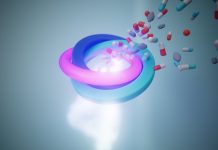
Hydrogen fuel cells and water electrolyzers are key technologies for a cleaner energy future, but they rely on one small, often overlooked part to keep them safe: the gasket.
This rubber-like seal sits between components in a fuel cell or electrolyzer stack, stopping hydrogen gas from leaking out.
If the gasket fails, efficiency drops and safety risks rise.
Now, a research team in South Korea has created a new type of gasket that is stronger, safer, and more environmentally friendly.
Scientists at the Korea Research Institute of Chemical Technology (KRICT), led by Dr. Keun-Hwan Oh, developed a nanocomposite gasket by adding tiny sheets called boron nitride nanoflakes into common rubber materials such as silicone and EPDM (a widely used synthetic rubber).
These nanoflakes are only a few atoms thick, but they make a big difference.
The team chemically modified them so they could tightly bond with the surrounding rubber.
This created a dense internal network structure, which made it much harder for hydrogen gas to slip through.
At the same time, the material became stronger and more stable under harsh conditions.
Amazingly, the researchers needed to add only a very small amount—just 0.5% by weight—of the modified nanoflakes to see major improvements.
In the EPDM gasket, stiffness increased by over 32% and hydrogen leakage dropped by more than 55%. In the silicone version, stiffness nearly doubled, and hydrogen leakage was reduced by about 43%.
The new gaskets also performed well in tough chemical environments. During long-term testing in acidic and alkaline solutions, the materials showed very little breakdown.
This means they can survive the demanding conditions inside fuel cells and water-splitting devices for long periods without losing their sealing ability.
When tested inside working systems, the new gaskets matched or even outperformed standard commercial gaskets. They helped maintain even pressure inside the device and reduced electrical resistance between components, which is essential for efficient operation.
This development is especially important because current high-performance gaskets often rely on fluorine-based materials, which are expensive and linked to environmental concerns due to PFAS (sometimes called “forever chemicals”).
The new gasket materials are PFAS-free and can be produced more affordably, making them a realistic alternative for widespread use.
Dr. Oh explained that this technology could help South Korea reduce its dependence on imported gasket materials. KRICT president Dr. Young-Kuk Lee added that the new development meets both safety and environmental goals, which is essential for the future of clean energy.
By solving multiple problems at once—strength, safety, durability, and environmental impact—this tiny upgrade to a simple component could play a big role in accelerating hydrogen-powered vehicles and large-scale clean energy systems around the world.



